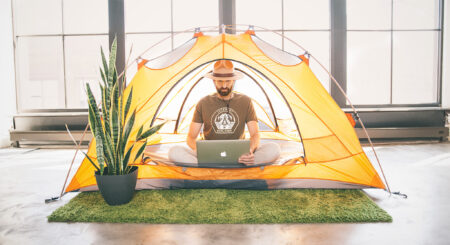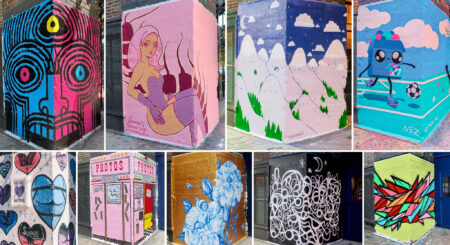In a world overrun by sameness – the same ideas, brands, images, products, styles – harnessing your creativity is the key to sustaining uniqueness amidst the fray. To achieve just that, you need a space that allows you the peace and quiet just to think and do. Here are some practical tips to design your very own creative space.

Institute an intention for your space
What are you hoping to achieve and create in this space? What are you informed and inspired by? At this early stage, you may only have the medium of creation in mind (i.e. writing, painting, printing), but that’s more than enough to work with as a founding inspiration for your room’s aesthetics. For example, a room for an aspiring writer would naturally be populated by trendy bookshelves and quotes from favourite authors. Likewise, a painter’s studio would have walls covered in copies of favourite inspirational pictures and artwork.
Whatever your preferred medium of creation, solid décor pieces for the enhancement of creativity include small plants. It’s always stimulating to have something actively growing and living in your space! (Given this fact, it is no surprise that the colour most associated with creativity is green.)
Make your materials part of your décor
Your creative room will use resources such as paints, fabrics, camera equipment, sewing machines, wool baskets, and typewriters. These creative materials can double as furnishings or focal pieces! Design your room around them and make these – the means and materials to the finished creative product – become the central focus of the room.

Make sure it’s practical and self-sufficient
Look beyond the surface-level sleek aesthetics of your room. Is the space comfortable enough for you to work in? If you had a great streak of inspiration and just had to get your ideas down, would you be happy to spend hours in this room?
Keep functionality as your highest design priority. Make sure you get comfortable (preferably ergonomic) chairs and consider whether you need an attached bathroom or a small kitchen area. Music considerations are important, too: you may want to consider installing a sound system to play inspirational podcasts or stimulating classical music.
Separate the creative space from the rest of the home
What conditions are amenable to creativity? If your answers include solitude, space, and silence, you’re right! A person’s creative space needs to be a proper haven to relax away from work and to take a break from responsibilities.
The idea of a creative space stems from the whole notion of drawn boundaries. The moment you cross the threshold from the world of work to the world of home, you abandon your working self. That same kind of psycho-geographical thinking applies to the creative space.
If you don’t physically have any room in the home, consider getting thrifty and repurposing a shed or even shipping container to house your dedicated creative hub. Containers are relatively cheap to procure, incredibly easy to customise and can serve as the perfect cosy space you need to get creative.

Work out your optimum design aesthetic for creativity
Think about what piques your creativity most. Do you need simple, minimalist decoration to best concentrate? Conversely, you may be an organized chaos type of artist (which some studies claim heighten creativity levels). Lighting is important here, too. Some find dark and moody interiors highly atmospheric for creative production (especially for imagination-based work such as novel writing) but others, such as visual artists, need natural and sometimes artificial light to work.
Happy designing and creating!




